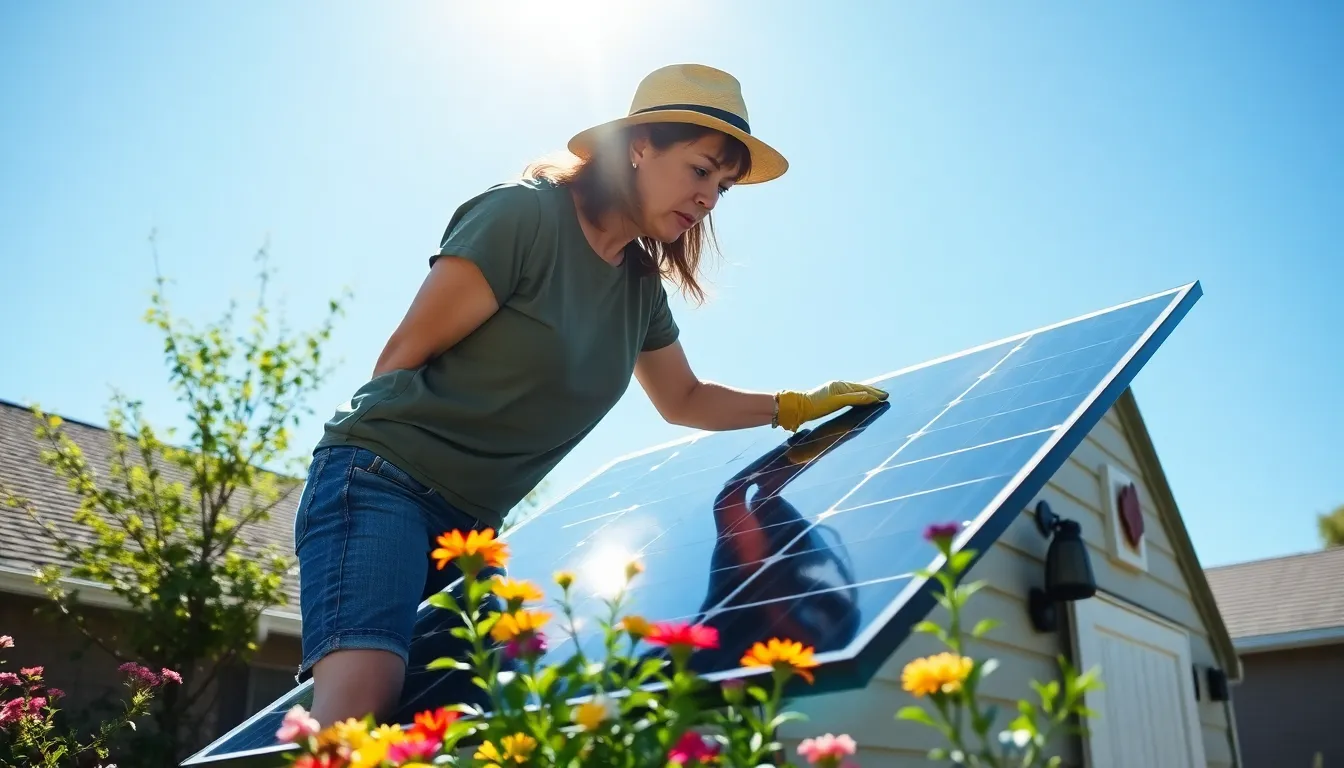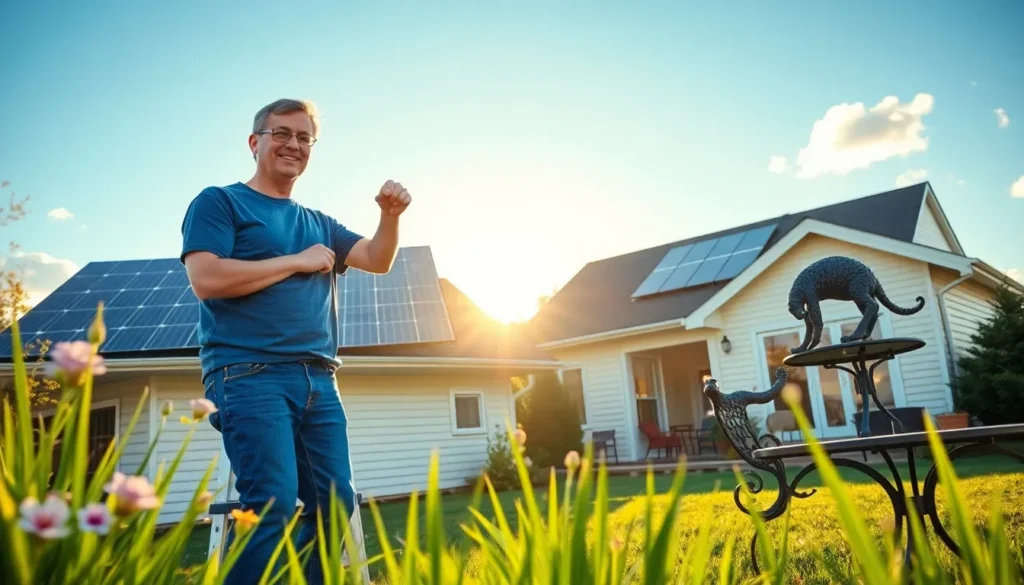Table of Contents
ToggleAs homeowners increasingly look for sustainable energy solutions, DIY solar projects have become a popular choice. By harnessing the sun’s power, homeowners not only help the planet but also significantly reduce their energy bills. This article explores the world of DIY solar solutions with a unique perspective that draws on the principles of resilience and adaptability found in nature, specifically the pangolin. Let’s jump into the essentials of solar energy, the benefits of going the DIY route, and practical steps for creating an effective solar system.
Understanding Solar Energy Basics

Solar energy is derived from the sun’s rays, which can be converted into electricity or heat. Understanding the basics of solar energy involves several key concepts:
- Photovoltaics (PV): This technology uses solar panels to convert sunlight directly into electricity. Solar panels are made up of many small units called solar cells, which contain a semiconductor material (usually silicon).
- Solar Thermal Energy: This is a different approach that captures sunlight to produce heat, which can be used for water heating or space heating.
- Net Metering: Many homeowners install solar systems to not only power their homes but also sell excess energy back to the grid. Net metering allows homeowners to offset the costs of their energy bills by receiving credit for the energy they provide.
- Inverters: An essential component of a solar system, inverters convert the DC electricity produced by solar panels into AC electricity, which is what homes use.
By grasping these fundamental principles, homeowners can make informed decisions when embarking on their DIY solar journey.
The Benefits of DIY Solar Projects
DIY solar projects offer numerous advantages:
- Cost Savings: The most significant benefit is the potential for financial savings. By building a system yourself, one can save thousands of dollars that would otherwise go to a contractor.
- Skill Development: Engaging in a DIY solar project can be a rewarding experience, allowing homeowners to acquire new skills and deepen their understanding of renewable energy technologies.
- Sustainability: By utilizing solar energy, homeowners can significantly reduce their carbon footprint and contribute to a more sustainable future.
- Customization: DIY projects can be tailored to fit individual needs. Homeowners can decide the size and scope of their solar installation, ensuring it meets their specific energy requirements.
- Energy Independence: A solar system can provide homeowners with more autonomy over their energy sources, reducing reliance on traditional electricity grids.
Getting Started with Your DIY Solar System
Embarking on a DIY solar project involves careful planning and research. Here are the critical steps to take:
Choosing the Right Solar Components
Selecting the right components is crucial for the efficiency of your solar system. Essential components include:
- Solar Panels: Consider the efficiency rating, warranty, and output of panels. Research different brands and technologies, such as monocrystalline, polycrystalline, and thin-film solar panels.
- Inverters: Choose between string inverters and micro-inverters, depending on the system’s design and performance needs.
- Batteries: If you wish to store excess energy, consider battery options for your setup, which can provide power during outages or at night.
Calculating Your Energy Needs
Start by assessing your energy consumption. Review your utility bills to understand your average monthly usage. Be sure to consider:
- Daily kWh Consumption: Calculate how much energy you typically use daily.
- Peak and Off-Peak Hours: Know when your energy consumption is highest and align solar production accordingly.
- Future Needs: Anticipate future energy requirements, such as electric vehicles or additional appliances.
Taking these factors into account will help you design a system that fits both your current and future needs.
Installation Steps for DIY Solar Systems
Installing a solar system can be the most challenging but rewarding part of the DIY process. Here are some essential steps:
- Permitting and Regulations: Check local zoning laws and obtain the necessary permits to ensure compliance with local regulations.
- Site Assessment: Evaluate your property to identify the best place for solar panel installation. Consider roof orientation, shading from trees or buildings, and structural integrity.
- Mounting the Panels: Follow the manufacturer’s instructions for securely mounting the panels. Be mindful of proper angles to maximize sunlight exposure.
- Electrical Wiring: Connect the solar panels to the inverter and battery (if applicable). Ensure that all connections are secure and meet electrical codes.
- Final Inspection and Testing: Once installed, have a licensed electrician inspect the system. Test the system to ensure everything is functioning correctly.
Pangolin: A Unique Perspective on Solar Energy
The pangolin, a unique creature known for its adaptability and resilience, offers an interesting metaphor for homeowners venturing into the DIY solar space. Just as a pangolin uses its hard scales to protect itself in a challenging environment, a well-planned solar system can shield homeowners from rising energy costs and environmental concerns.
- Adaptability: Like the pangolin adapting to various habitats, homeowners can customize their solar setups based on individual needs and local conditions. Tailoring the system for optimal performance speaks to the essence of both the pangolin and the DIY spirit.
- Resilience: Just as pangolins have thrived even though threats, investing in a solar system showcases resilience against fluctuating electricity prices, leading to long-term savings and stability.
Maintaining Your DIY Solar Setup
Once a DIY solar system is installed, ongoing maintenance is essential to ensure its efficiency:
- Regular Cleaning: Dust and debris can accumulate on solar panels, reducing their efficiency. Regular rinsing with water or using a soft brush helps maintain optimal performance.
- System Monitoring: Use monitoring equipment to track energy production. Understanding the performance metrics helps ensure that everything is performing as expected.
- Inspections: Conduct regular inspections of the wiring and connection points to prevent potential issues.
- Battery Maintenance: If batteries are used, be sure to check fluid levels and connections regularly and adhere to manufacturer guidelines for longevity.
Conclusion
DIY solar projects offer homeowners a powerful way to take charge of their energy needs, with benefits that extend beyond financial savings. By harnessing solar energy, they can contribute to a more sustainable future while enjoying the satisfaction of building something functional and beneficial. The principles drawn from the pangolin, adaptability and resilience, serve as reminders that with the right knowledge and tools, homeowners can thrive in their energy endeavors. Embracing the DIY solar journey means embarking on a path toward energy independence, empowerment, and environmental responsibility.







